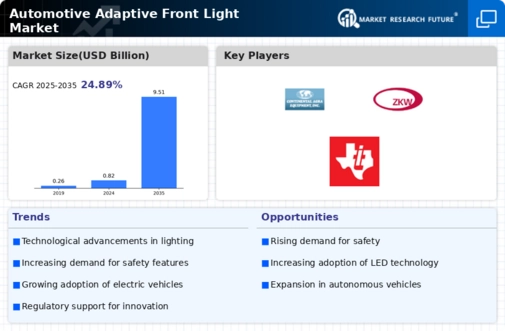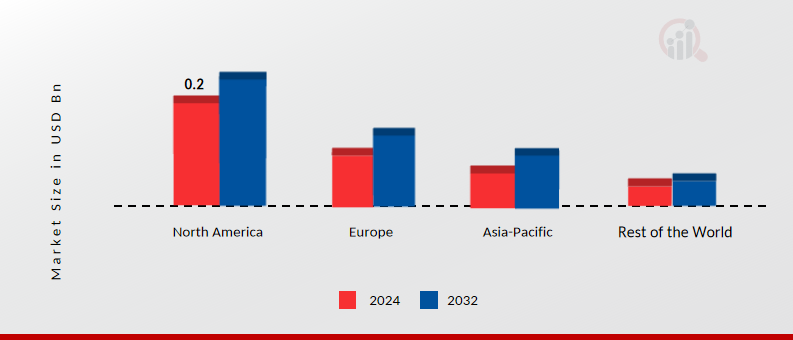Market Trends
Key Emerging Trends in the Automotive Adaptive Front Light Market
In the dynamic landscape of the automotive industry, the Automotive Adaptive Front Light (AFL) market demands strategic positioning for companies to establish a robust presence. Various market share positioning strategies are employed to differentiate products and attract a diverse customer base in this vital segment of vehicle lighting systems.
A fundamental strategy in the Automotive Adaptive Front Light market is a relentless focus on technological innovation. Companies invest significantly in research and development to enhance the performance, efficiency, and safety features of their AFL systems. Staying at the forefront of technological advancements allows manufacturers to offer innovative lighting solutions that not only meet but surpass industry standards. Advanced features such as adaptive beam patterns, responsive to steering and road conditions, contribute to safer driving experiences, positioning the company as a leader in the market.
Strategic collaborations and partnerships play a pivotal role in expanding market share in the Automotive AFL sector. Aligning with key players in the automotive supply chain, including original equipment manufacturers (OEMs), lighting system integrators, and technology providers, enables AFL manufacturers to integrate their products seamlessly into broader vehicle platforms. This collaborative approach not only enhances the visibility and acceptance of AFL solutions but also facilitates joint efforts to address industry-specific challenges and drive innovation in lighting technologies.
Market segmentation is another crucial aspect of successful market share positioning. Understanding the diverse needs of different vehicle segments, such as passenger cars, SUVs, and electric vehicles, empowers AFL manufacturers to tailor their products accordingly. Customizing adaptive front light systems for specific applications ensures that companies address the unique requirements of each automotive sector, appealing to a broader range of clients and gaining a competitive advantage in the market.
Educating customers about the benefits and functionalities of Automotive Adaptive Front Lights is vital for effective market share positioning. The advanced nature of these lighting systems often requires a deep understanding of their role in enhancing visibility, safety, and overall driving experience. Companies that actively engage in customer education and awareness campaigns can demystify their products, showcase the advantages of adaptive lighting, and build trust with clients. Informed customers are more likely to choose vehicles equipped with cutting-edge AFL systems, contributing to the market share of the manufacturers.
Cost competitiveness remains a critical factor in market share positioning within the Automotive AFL market. Striking the right balance between offering high-quality lighting systems and competitive pricing is essential for attracting a broad customer base. Manufacturers that optimize production processes, explore cost-effective materials, and implement efficient supply chain management practices can offer AFL solutions at competitive prices without compromising on performance. This cost-effective strategy appeals to automakers and end consumers alike, enhancing the market share of AFL manufacturers.
Moreover, adherence to international standards and regulatory compliance is paramount in the Automotive Adaptive Front Light market. Companies that invest in developing lighting systems that meet or exceed industry regulations position themselves as reliable and compliant partners. Addressing regulatory requirements not only enhances the marketability of AFL solutions but also establishes a reputation for reliability and adherence to safety and environmental norms.
In conclusion, market share positioning in the Automotive Adaptive Front Light market involves a comprehensive and multifaceted strategy. Companies that focus on technological innovation, strategic collaborations, market segmentation, customer education, cost competitiveness, and regulatory compliance are better positioned to thrive in this competitive industry. By aligning their offerings with the evolving needs of the automotive sector, Adaptive Front Light manufacturers can secure a significant market share and contribute to the advancement of vehicle lighting technologies.







Leave a Comment